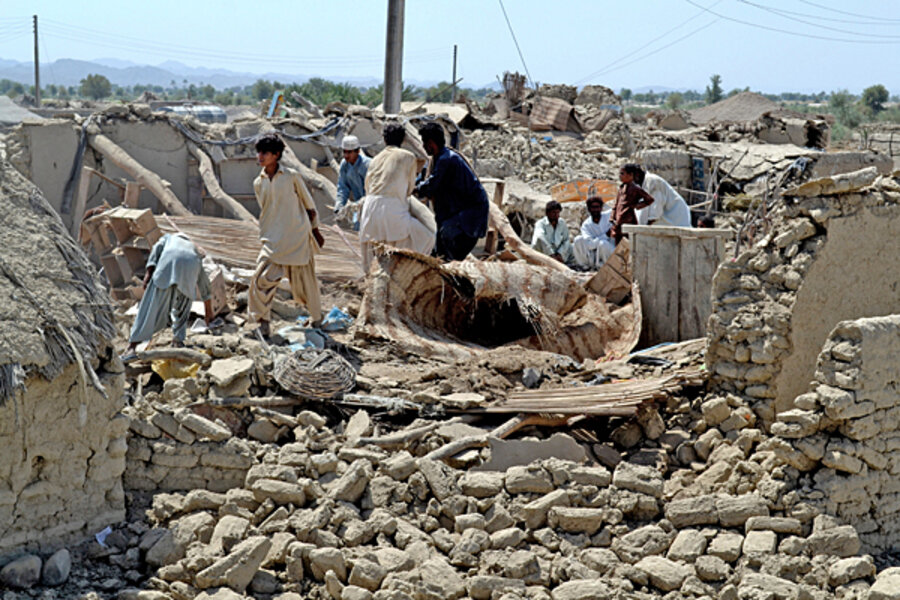Biggest earthquake in Pakistan since 2005 kills 327
Loading...
| QUETTA, Pakistan
The death toll from a powerful earthquake in southwest Pakistan rose to 327 on Wednesday after hundreds of mud houses collapsed on residents throughout the remote and thinly populated area, local officials said.
Pakistan's Army airlifted hundreds of soldiers to help with the aftermath of the worst earthquake in the South Asian country since 2005, when about 75,000 people were killed in the country's north.
Tuesday's earthquake of magnitude 7.7 struck Baluchistan, a huge earthquake-prone province of deserts and rugged mountains, and was felt across South Asia.
It destroyed houses and cut communications with the worst affected district of Awaran, and was so powerful it caused a small island to emerge from the Arabian Sea, just off the Pakistani coast.
"Two hundred and eighty-five bodies have so far been recovered in the Awaran district," Abdul Rasheed Gogazai, the deputy commissioner of Awaran, the worst affected town, with a population of about 200,000, told Reuters.
"And 42 bodies were found in the neighboring Kech district. We have started to bury the dead."
The spokesman of the government's National Disaster Management Authority (NDMA), Kamran Zia, put the death toll at 259 by early Wednesday evening.
Rescue teams found it hard to reach the remote location quickly, and some officials said the death toll was likely to rise as emergency workers fanned further into the mountains to assess the damage.
Mohammad Shabir, a journalist, described scenes of grief and chaos in villages, saying survivors were digging rows of graves and picking through the debris.
"As far as the human eye can see, all the houses here have been flattened," he told Reuters from Awaran, adding that rescue teams were distributing supplies.
The earthquake struck Pakistan at a time when the country was still mourning the deaths of more than 80 Christians in a suicide bomb attack on an Anglican church in the city of Peshawar on Sunday.
To the south, on the beach near Gwadar port, crowds of bewildered residents gathered to witness the rare phenomenon of an island that the quake thrust up out of the sea.
The island would not survive long because sea waves would eventually break it down, the NDMA spokesman said. "This is not a permanent structure, just a body of mud," he added. "It will disappear over time."
(Additional reporting by Syed Raza Hassan and Mehreen Zahra-Malik in Islamabad; Writing by Maria Golovnina; Editing by Clarence Fernandez)







